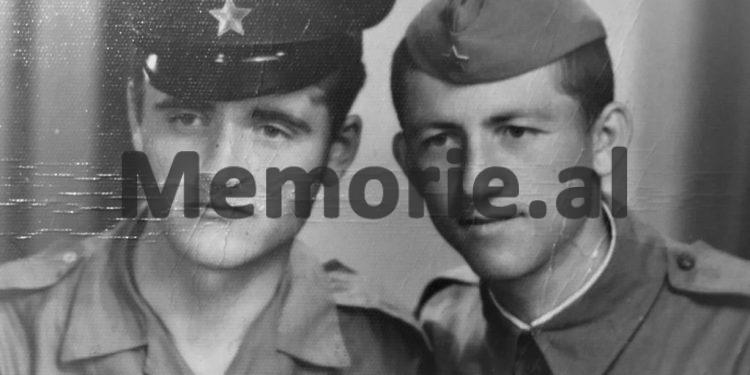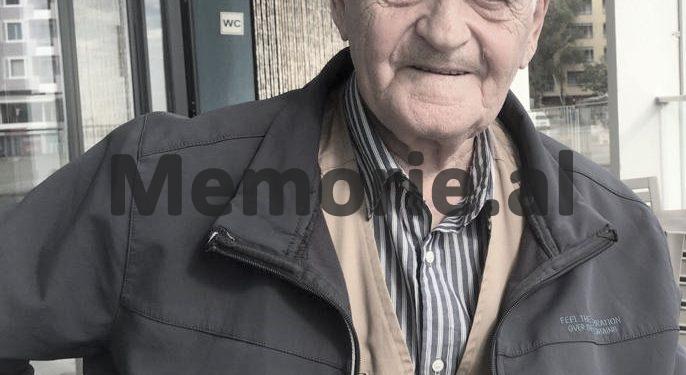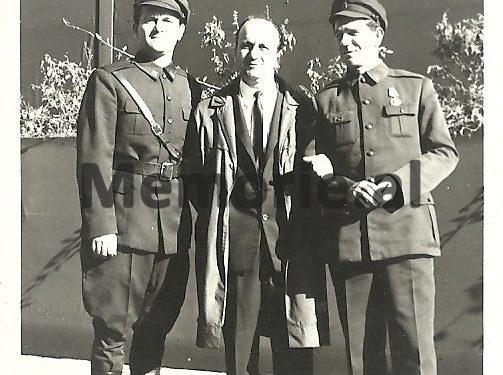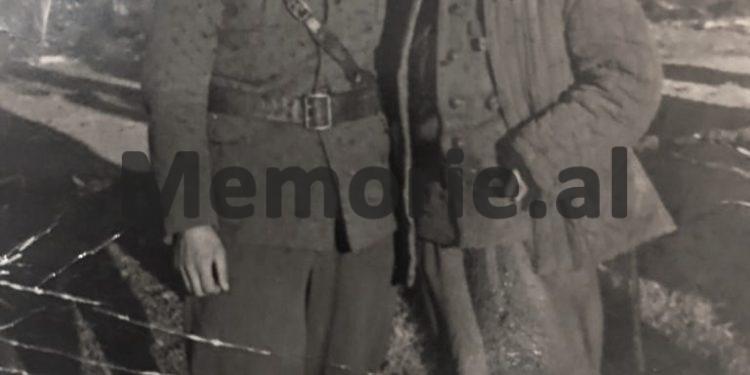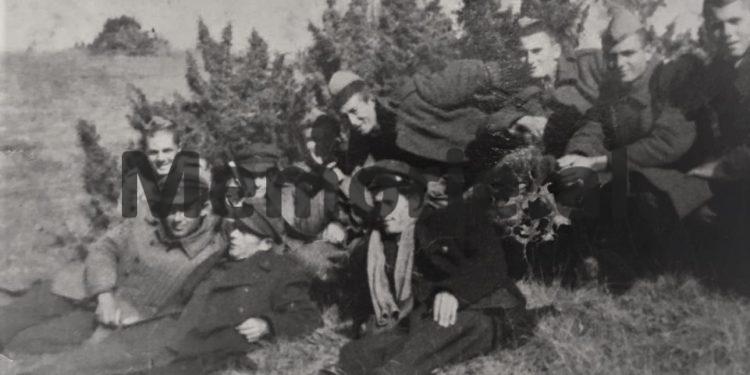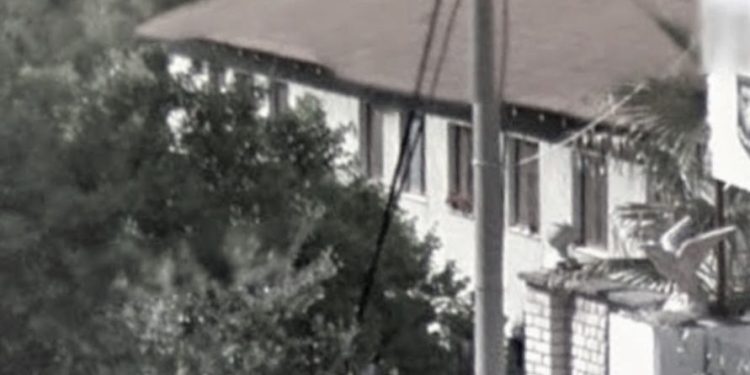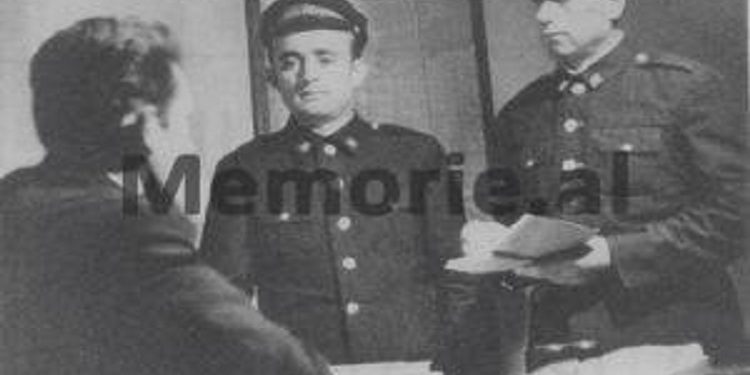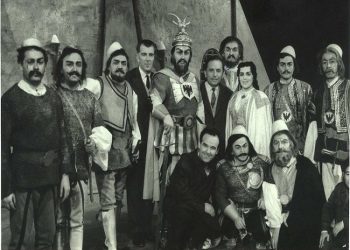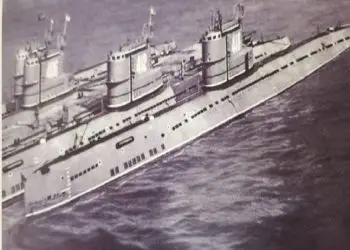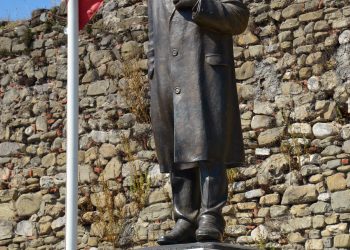By Dashnor Kaloçi
Second part
– Former officer of the Special Security Battalion of the Ministry of Internal Affairs, Halil Rrahmani, tells about the “highly secret services” that he personally performed in the years 1971-1991-
Memorie.al / “Taking into account the fact that I myself served in the Tirana Prison (‘Ward 313’), as a guard officer, for the entire period of more than one year (1982-’83) during which the investigative process took place and judiciary of the so-called “Kadri Hazbiu Hostile Group”, I say with conviction that the former Prosecutor General of the Republic, Rrapi Mino, has not told the truth. He wanted to justify himself with what he said, since, during the entire period of time that we were present there, we heard screams from the convicts, which was easily understood as coming from the violence and torture that was inflicted on them. Likewise, from my fellow officers and various soldiers who served inside and outside the prison at that time, I heard that, after the trial against the “enemy group of Kadri Hazbi” (which took place inside the premises of that prison) ended , one day after the death sentences of Kadri Hazbiu, Feçor Shehu, Llambi Ziçishti and Llambi Peçini were heard from their cells, cries, shouts and screams were heard, such as: “O Enver Hoxha, help us spare our lives”, “O Hekuran Isai, help, spare our lives, don’t shoot us”, etc., of this nature. Likewise, to my knowledge, Kadri Hazbiu was taken out of Tirana prison dead on the night of September 9, 1983, and his corpse was then sent to the “Executive Committee” facility in Linza, next to the Security Battalion where were the secret tunnels where Feçor Shehu, Llambi Ziçishti and Llambi Peçini were shot, in the same place where Beqir Balluku, Petrit Dumen and Hito Çakon were also shot years ago”.
Continues from last issue
Mr. Rrahmani, have there been cases of the secret coming out?
No, it was out of the question. Not only at that time, but I don’t know that anyone has spoken publicly even after the 90s, when the political systems in Albania were changed.
The first and second companies, what tasks did they perform?
The first company that was coded as ‘Department 329’, or as it was otherwise known “Motor Platoon”, served to cover with 24-hour service, the Ministry of Internal Affairs, as well as its annexes, the Ministry Club, the Museum, the Directorate of Prisons, etc. Likewise, that department also had a motorized platoon of soldiers, (mainly with “Java” and “Guz”), who were in charge of moving the secret mail of the Ministry of the Interior, from the ministry, through all the departments and facilities her inside Tirana.
Mostly, they received the secret mail from the Ministry of the Interior, to send it to ‘Department 75’, (a Liaison ward located near ‘Department 324’, just before going to Linzë village) and vice versa. Whereas the 2nd company where I was the platoon commander, apart from the training that was carried out throughout the year, was mainly engaged in engineering works, such as tunnels, command post, etc., military facilities.
Did you participate in these secret operations?
Yes, because that was our functional task. From the beginning of 1972, I and some selected soldiers in civilian clothes worked for several months, in the center of Tirana, at the “House with Leaves”. In the yard, in front of the building, from the side of the main road, in the space between the surrounding wall and the building, we worked and built several deep basements, which were then concreted by “NSHN-10”, as the company involved was called with the construction works of the Ministry of the Interior.
It is understood that the work that was done there was kept as far as possible from the eyes of passers-by, placing some sheet metal on the surrounding wall. The soil that was extracted from there was removed by vehicles only at night. These underground rooms or cellars communicated with a tunnel that went out from under the foundations of that building, being connected by stairs to a room on its first floor.
What were those cellars for?
No one officially communicated to us what they would serve for, but from the conversations we found out that they were interrogation rooms, for the “disobedient”, for the torture of those arrested by the State Security.
In other objects of this nature, have you worked?
Yes, in 1980, I, with the soldiers of my platoon of the 2nd Company of the Security Battalion, built a secret facility, within the premises of the 1st Company (Motor Platoon), which, as I told you, was located next to the surrounding wall of the west side of the Academy of Sciences. On the southern side of the premises of that department, we built a concrete well 10 meters deep and from there, a tunnel, which went under the building of the Ministry of Internal Affairs. I remember that we worked on that object, which was very secret and of special importance, for about a year, maybe more, since we advanced no more than one or two meters a day, there were collapses due to the structure of earth, with mud. The reinforced concrete tunnel was 2 m. high and 1.5 m. wide. We encountered the biggest difficulty under the foundations of the Ministry of Interior building, as they were very strong and it took us a long time to connect the tunnel with the basements of that building.
About two years later, in 1982, with the soldiers of two companies of the Security Battalion (2nd and 3rd), they worked for several months, for the construction of the underground facility (which is still there today , named “Bunk-Art 1”), which would serve as a shelter for the officials of the Ministry of Internal Affairs, in case of war. These are objects where I have worked, but such objects have been built again, in different periods of time.
How and where…?!
To my knowledge, at the beginning of the 70s, a very secret facility was built, which connects the building of the Prime Minister’s Office and the Central Committee of the PPSh, with the “Palace of Brigades”. An underground tunnel made of concrete, which would serve for the evacuation of the senior leadership and the government, in case of war, or in an exceptional case.
The department that built that building was stationed on the left down the road that leads to the “Palace of Brigades”. There has been talk about other objects of this nature, but I can’t say more about these others, since I don’t have accurate information.
In addition to the work on the construction of secret facilities, what are some of the special duties and services that the Security Battalion of the Ministry of the Interior performed, where you served?
The officers of the Security Battalion, (‘Department 324’), have also performed some special tasks and services, such as those in 1975 and in the years 1982-’83, when they were sent to the Tirana Prison, to reinforce that department, because at that time the investigation and trial against the so-called “Beqir Balluk’s coup group” and “Kadri Hazbiu’s hostile group” took place there.
What services did the members of the 324th Ward perform at the Tirana Prison?
In 1975, the investigative process against Beqir Balluk, Hito Çako, Petri Dumas, etc., other former high-ranking soldiers of that time, was carried out at the Tirana Prison. Based on this, two platoons of our Security Battalion were sent to reinforce the service provided by ‘Department 313’, the soldiers and policemen of that prison. The same thing happened in the years 1982-’83, when the investigative and judicial process against the so-called “Kadri Hazbiu Hostile Group” took place in the premises of that prison, where, along with the former Minister of Interior and Defense, Hazbiu, there were also the former Minister of the Interior Feçor Shehu, the former Minister of Health, Llambi Ziçishti, the former Minister of Foreign Affairs, Nesti Nase, the former Director of Security and Physical Protection of the leadership, Llambi Peçini, as well as other senior officials , deputy ministers and directors, such as: Mihallaq Ziçishti, Gani Kodra, Elham Gjika, Kristofor Martiro, Ali Çeno, up to Fiqret Shehu and her two sons, Skenderi and Bashkimi. In the same way, some of the former generals and senior military personnel of the Ministry of Defense were kept isolated in that prison, such as: Sadik Bekteshi, Muhamet Prodani, Vaskë Gjino, Vehbi Hoxha, Halim Ramohito, Arif Hasko, Gjergj Titani, etc.
Why all that security measure…?!
From today’s judgment, but even then it was not difficult to understand those security measures, all those sieges, outside and inside the prison, had more of a psychological character, to tell the people and all those who looked at those soldiers and heavily armed officers, that: “Here, inside this prison, are the most dangerous hostile groups that Albania has ever had”, which Enver Hoxha and the official propaganda of that regime constantly talked about.
In this context, to strengthen the protective and security measures of the Tirana Prison (‘Ward 313’) where the investigation of the “Kadri Hazbiu Group” was kept isolated and developed, in addition to additional personnel such as those of the Security Battalion, many were added and prison security personnel with military and civilians, who were on 24-hour duty in the interior. The increase in personnel was noticeable and was especially visible when shifts were changed.
We watched them every day when they came in and out, as we served as guard officers, some of the service personnel, who performed delicate tasks in the prison, transported them in the vehicles of the Ministry of the Interior, from the prison to home and vice versa, as it was thought that, they could be captured and compromised by the enemy.
Were you on duty at Tirana Prison when these “hostile groups” that you just mentioned were being tried?
I was the commander of a platoon of soldiers of the II Company of the Security Battalion, who served in 1982-’83, as there were other officers, my colleagues, from another platoon of the III Company- of our department and throughout the period we served, we served as 24-hour guard officer, just like the officers of ‘Department 313’.
From various testimonies made public after the 90s, it is said that; almost all members of the so-called “enemy groups” have been brutally tortured. Do you know about this?
I have also heard and read these things, but I can neither confirm nor deny this, that when you do not see such a thing with your own eyes, you cannot say that it happened! But, for the sake of the truth, it must be said that during all the time that we served, we heard screams from the convicts, it was understood that it came from the violence that was exercised against them. I was a guard officer and it was my functional duty to enter the interior of the prison, through the corridors of those floors where the cells were, which kept Kadri Hazbiu, etc. isolated. But I, with some rare exceptions, have never entered the corridors where the cells of the convicts of the “Hostile Group of Kadri Hazbiu” were, because I couldn’t bear to hear their screams. I heard from my colleagues with whom we talked, that Kadri Hazbiu and the others were tortured, quite a bit.
After the 90s, in an interview given in a daily, the former Prosecutor General of the Republic during the communist regime, Rrapi Mino, denied that they were tortured. He explained that; the screams coming from the cells where Kadri Hazbiu and other members of that group were kept isolated, were staged by investigators and Security officers, for psychological effect. The shouts that were said to be of Kadri Hazbiu, etc., were imitated and made by the investigators and the people of Sigurimi, who dealt with that group. Do you know about this?
As I told you, I can neither confirm nor deny these, because I don’t know anything concrete. But in my judgment, given the fact that I myself served there, I say from the beginning that the former Prosecutor General of the Republic, Rrapi Mino, has not told the truth and wanted to exonerate him, with what he has said. Me and my colleague platoon commander (Ismet Brika), in addition to being a guard officer, also checked the internal order of our soldiers, in the dormitory that was inside the prison premises, and then we checked the service that was done outside the prison premises, up to the Perim Institute Potatoes, etc.
But, from my fellow officers and various soldiers who have served inside and outside the prison, I have heard that after the trial against the “hostile group of Kadri Hazbi” (which took place inside the premises of that prison) ended, a day after after the death sentences of Kadri Hazbiu, Feçor Shehu, Llambi Ziçishti and Llambi Peçini, calls and screams were heard from their cells, such as: “O Enver Hoxha, help, spare our lives”, “O Hekuran Isai, help , spare our lives”, etc., of this nature.
After the 90s, it was said in the press that during the period of the investigative process against the so-called “Kadri Hazbiu Group”, Minister Hekuran Isai came and personally participated in the investigations and the tortures that were carried out against Kadri Hazbiu, etc. . Do you know about this?
It is true that during that period the Minister of Internal Affairs, Hekuran Isai, came at any time, day and night, the first stop he made was at the guard officer’s office where we were, he handed over his personal weapon (revolver) and we showed up, according to the rule. I cannot confirm whether or not he used violence against Kadri Hazbi and others. But for the sake of the truth, we have also heard this, that he has personally used violence against them, as then, but also after the 90s./Memorie.al
The next issue follows




